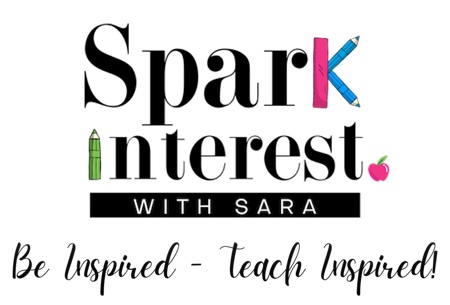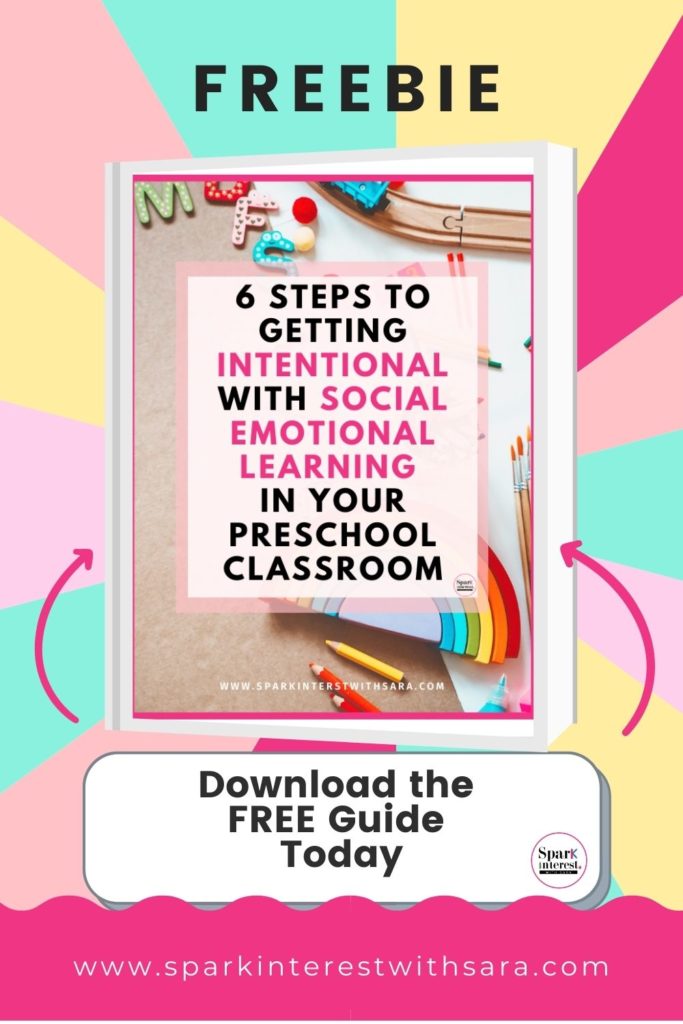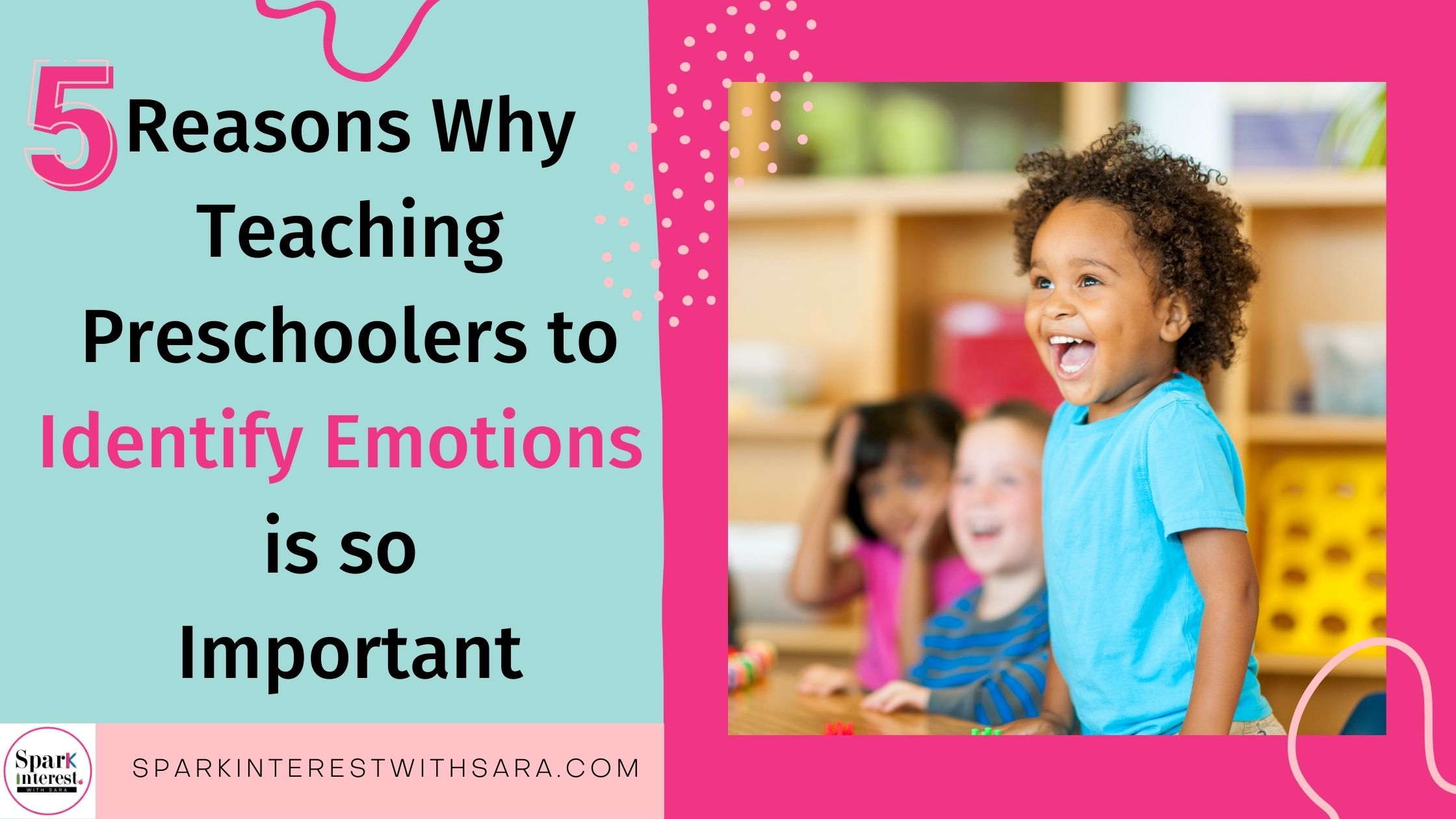
Did you know that in surveys done by Breńe Brown and her team, they found that people on average can only identify 3 emotions when they are actually feeling them? I’m not kidding.
The 3 emotions are happiness, sadness and anger (Atlas of the Heart by Breńe Brown).
That is absolutely stagering if you think about it.
I am just so passionate about social emotional learning in early childhood because I don’t want to continue this trend. I want to have children grow up with solid foundations in emotional intelligence. I want children to grow up with more self awareness than we ever did!
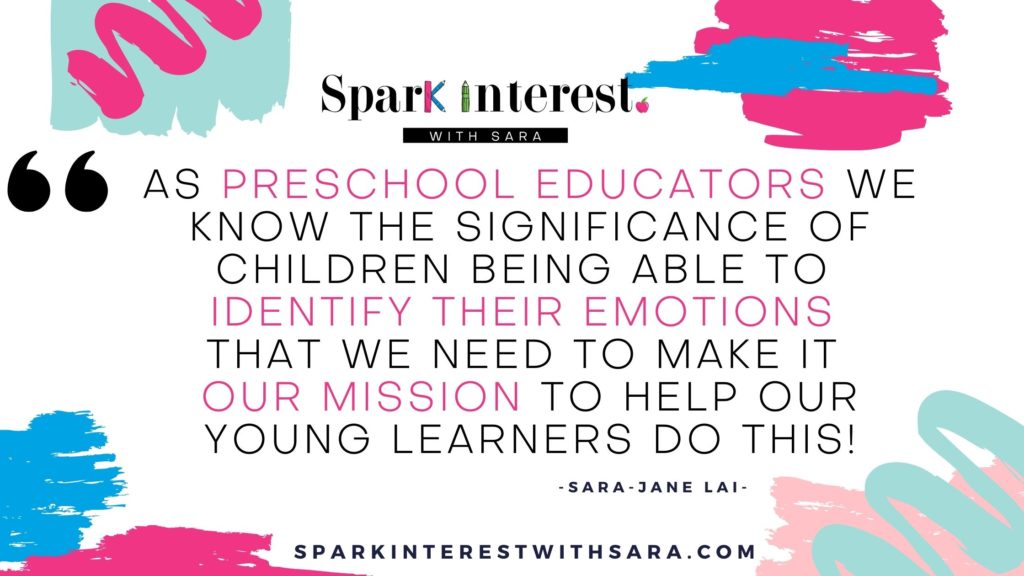
As preschool educators we understand the significance of children being able to identify their emotions that we need to make it our mission to help our young learners do this!
Before I jump right in with all the reasons why teaching preschoolers to identify emotions is so important, I wanted to make sure you have dowloaded my free guide: 6 Steps to Getting Intentional with Social Emotional Learning in your Preschool Classroom. This free guide will break it down for you and show you how you can get intentional when it comes to planning SEL for your young learners.
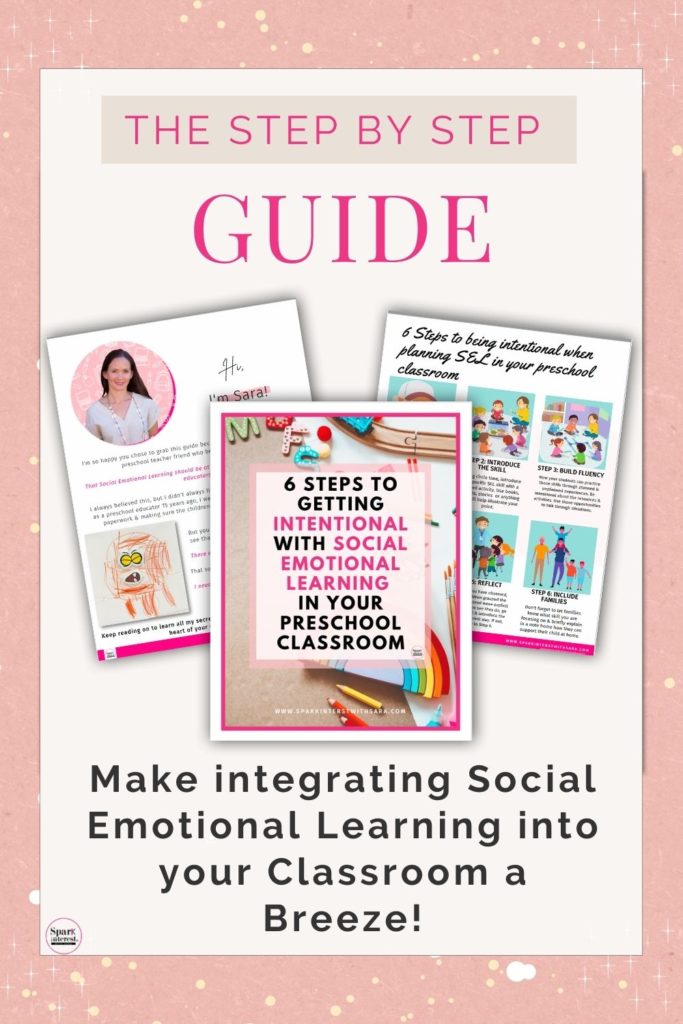
Why Teaching Preschoolers to Identify Emotions is Important
There are many reasons preschoolers need to be able to identify emotions. When students feel specific ways, especially our youngest learners, they can often act on those emotions without slowing down and thinking. This lack of emotional awareness can cause sudden outbursts or negatively affect their peer-to-peer relationships. As preschool teachers, we must teach students to identify their emotions and then teach them the tools to manage them.
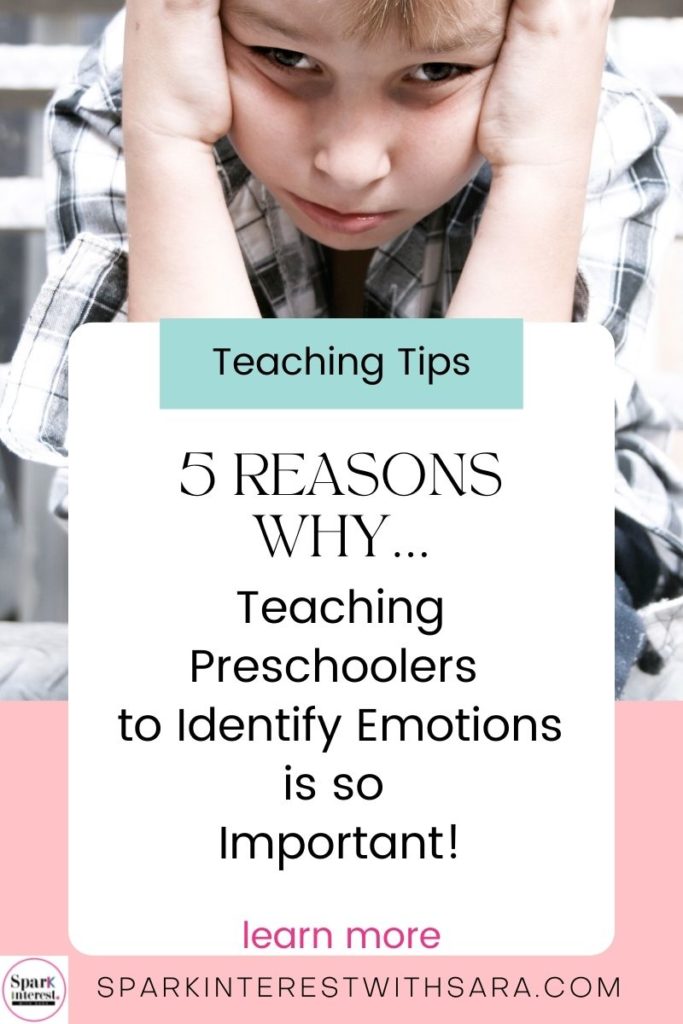
5 Reasons Why Preschoolers Need to Identify Emotions
There are so many reasons why we should teach our preschoolers to identify emotions but here are the 5 most important reasons!
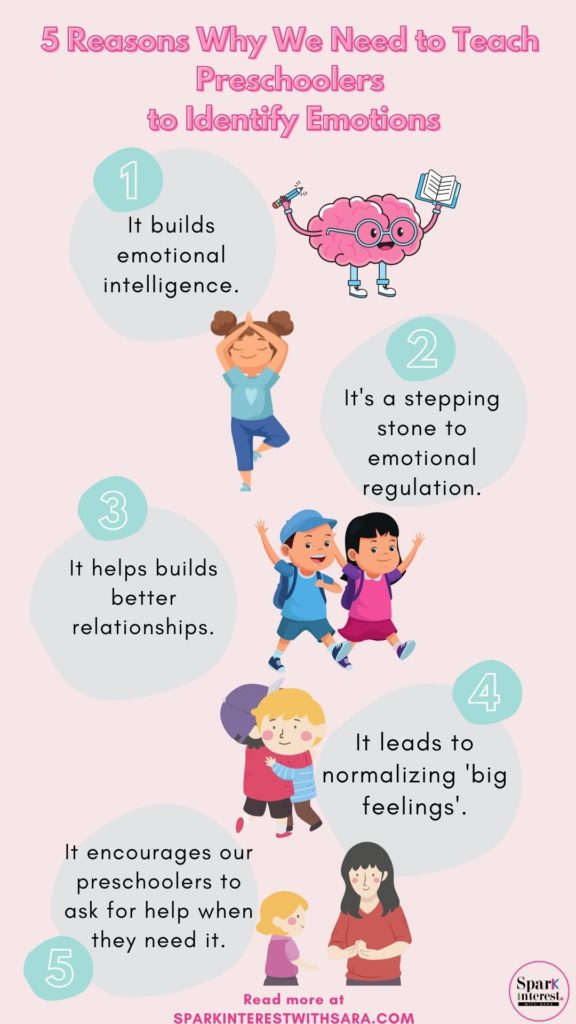
Reason #1: Build emotional intelligence
Have you noticed that your preschoolers need more support in their social, emotional and mental health in recent years? Our kiddos only know ‘pandemic life’. They have no memory of what life was like before. WIth that, many early years centers are shifting their viewpoints and asking teachers to pay attention to their students’ social, emotional, and mental health, first and foremost.
For preschoolers, labeling emotions accurately is the building block for emotional intelligence. They need to be able to ask themselves: What is happening in my body? Why am I feeling this way? What is happening around me?
Being able to recognize emotions and process them will help each student begin that journey to building their vocabulary and awareness around their emotions. You can easily help students identify emotions through different activities and lesson plans.
Reason #2:Emotional Regulation
When you can identify your feelings, you can better manage them. Your preschoolers come into your classroom feeling many different emotions throughout the day. Some have the skills to deal with them whilst many are just learning to. Working with students to identify their feelings and emotions will help them better regulate them.
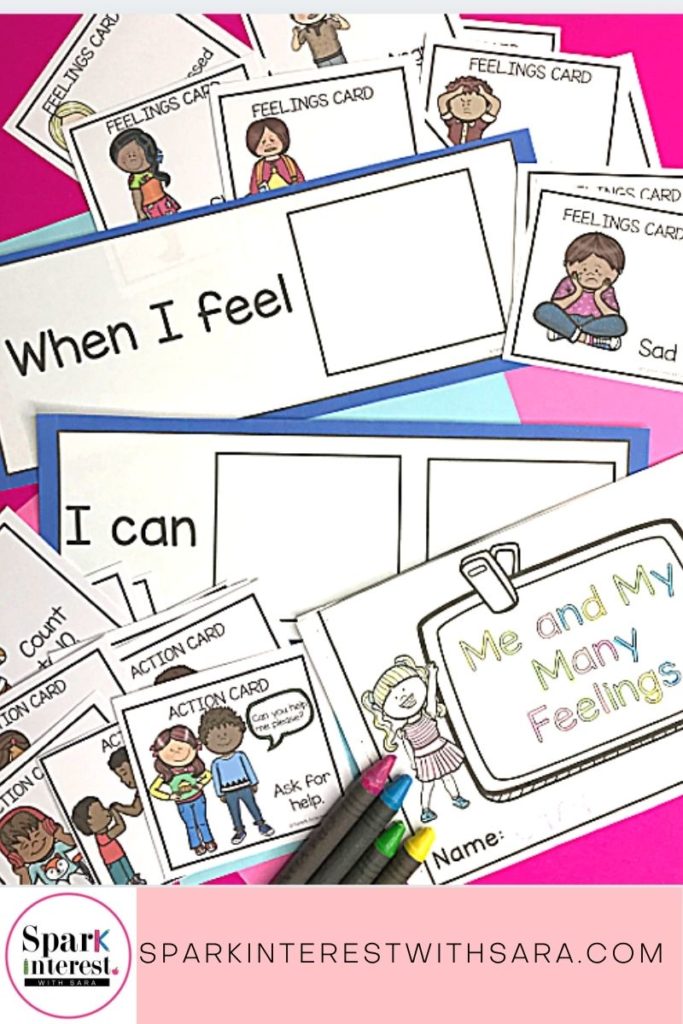
Reason #3: Build Better Relationships
Relationship building is one of the essential parts of preschool. Students are just starting to work with children their age, which can often be a challenging task. Many conflicts will arise. Teaching little learners to identify feelings, then articulate them, which helps create better relationships with classmates. Students can use statements such as “I feel, You made me feel…” when dealing with peer-to-peer conflicts, leading to a healthier and happier classroom.
Reason #4: Normalize ‘Big Feelings’
Yes, everyone needs to start to normalize ‘big feelings.’ Toddlers have them, school-age children have them, and even adults have them. It is essential to recognize these feelings are normal, and everyone is allowed to have these types of feelings. Using inference cards will enable students to identify and figure out what situations may give them big feelings is a great tool. Giving those feelings a name is essential in normalizing them. By normalizing them, we take away the shame and judgement from them.
Reason #5: Asking for Help
When our young learners are able to identify their own emotions, they are much more able to ask for what they need. For example, if a child identifies they feel nervous about Show-and-Tell, they will be more likely to go to you and articulate how they feel and ask for help.
These 5 reasons are just a couple of reasons why you need to teach your preschoolers about emotions. You can teach emotions through different activities such as worksheets, PowerPoints, read alouds, and more!
Tips to Help Preschoolers Identify Emotions:
Here are a couple of quick tips you can use in your classroom:
- Read books
Books are a great way to introduce new vocabulary around feelings. A student can ask questions about the characters, or you can come with guided reading questions that focus on identifying the emotions of the characters. What is the character feeling? Why is he or she feeling that way? What is happening? What are the other characters feeling?
- Personal Stories
When working with feelings and emotions, share personal stories – “when I was your age …” Being relatable will go a long way, and it will also give you a chance to show how an emotion looks and feels. By sharing a personal story, you will be able to share coping strategies you used when you felt a particular feeling. Personal stories can easily be used in the same way as a read-aloud.
- Daily Routine
Put emotional work into your morning or afternoon routines. Ask your students, how are you feeling this morning/afternoon? Use different descriptive words around emotions. Make it part of our everyday to dig deep into the nuances of emotions.
- Real Examples
Talk about real examples students may see throughout the day and bring them to group time and talk about them. You can also help your student navigate these situations, such as acting out different scenarios and working through the emotions identified. This will give everyone a chance to work together to identify how the person might have felt & strategies they could have used to manage them.
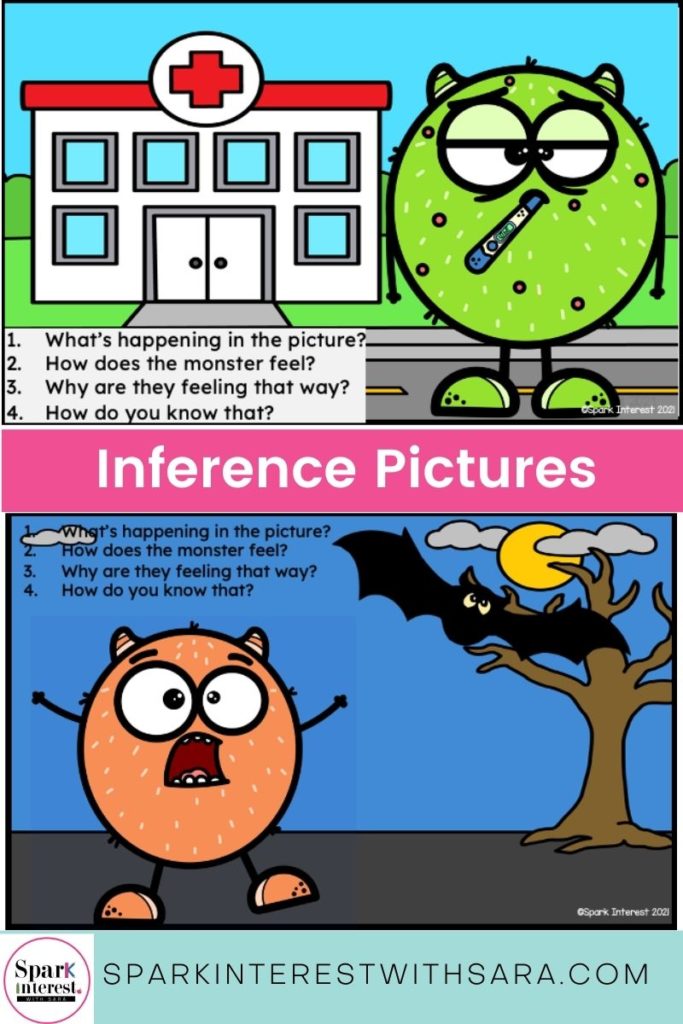
Overall, these tips and reasons will help your kids (and yourself!) become more socially and emotionally aware of not only their own emotions but the emotions of others. People often do not realize how much our young learners are capable of learning when it comes to emotions!
Thank you for making social- emotional learning a big part of your young students lives. These children that pass through our classrooms will be equipped with being able to identify wayyyy more than 3 emotions, THAT’s FOR SURE!
If you are looking for other related reads, check these out:
Let's Connect:

Sara
